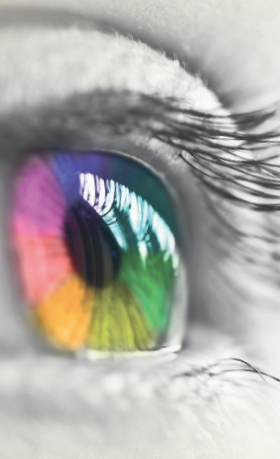Color Vision
Our eyes take in light through a hole called the pupil. A lens inside the eye focuses the image, and the retina detects that image—you might picture the retina as the wall a projector puts the image on. The retina contains two structures called rods and cones. Rods and codes detect light and send images to the brain.
Rods are great at capturing very dim light and movement. However, they do not detect colors. We can see colors so vividly because of cones, which can only function when there is plenty of light. The number of rods we have is a lot higher than the number of cones we have. This means we see pretty well during the day, and we can see many kinds of colors during the day, but we still see reasonably well in the dark.
The number of rods and cones is different in animals. Many animals including cats and dogs have fewer cones than us. Their color vision is not very good. However, monkeys, squirrels, birds, insects, and many types of fish can see a fairly good range of colors. In some cases, it’s not as good as what we humans see, but it’s much better than cats and dogs. Contrary to general belief, bulls are colorblind. They chase after the red cloak because it is moving, not because it is red. On the other hand, bees and butterflies can see colors that we can’t see. Their range of color vision extends into the ultraviolet. The petals of the flowers they pollinate have special ultraviolet patterns which guide the insects deep into the flower.
Scientists say that good color vision helps animals find food on the land or in the water. For land animals, good color vision helps to tell the difference between ripe red fruit and unripe green fruit. Colors can also make animals more attractive to each other when they look for a mate. Finally, the ability to see colors helps animals identify predators - other animals who may attack them.

